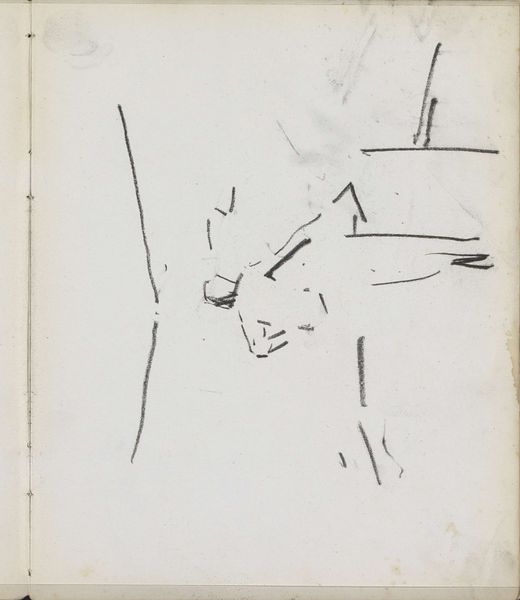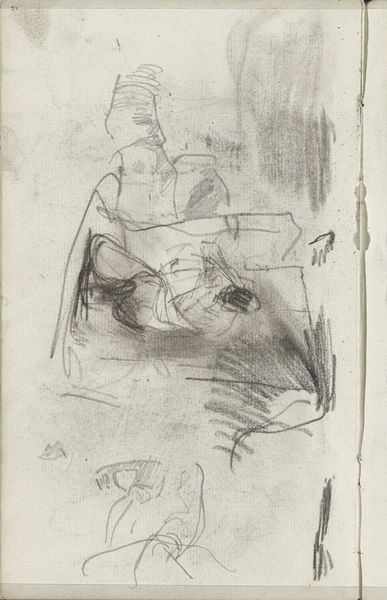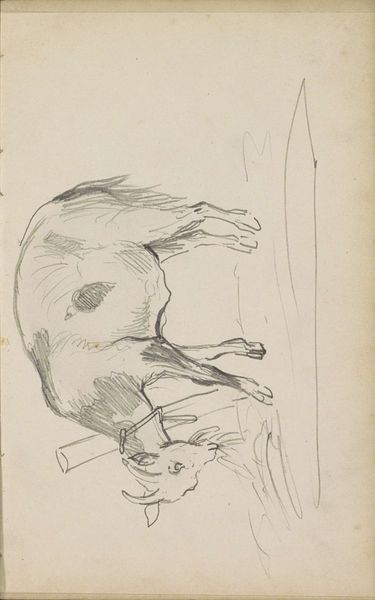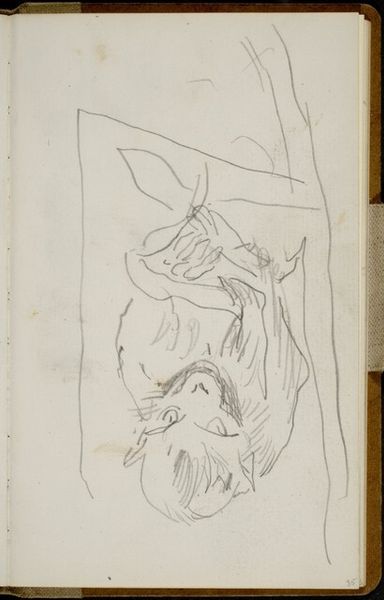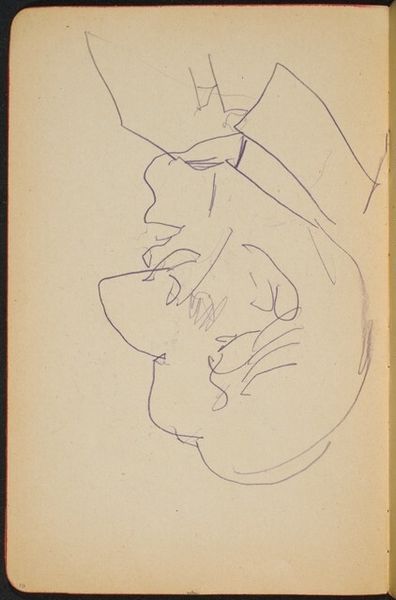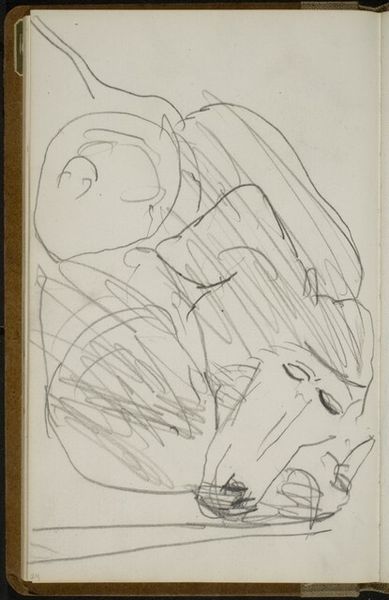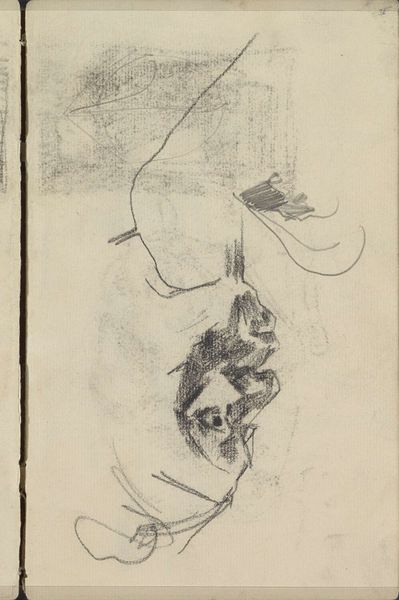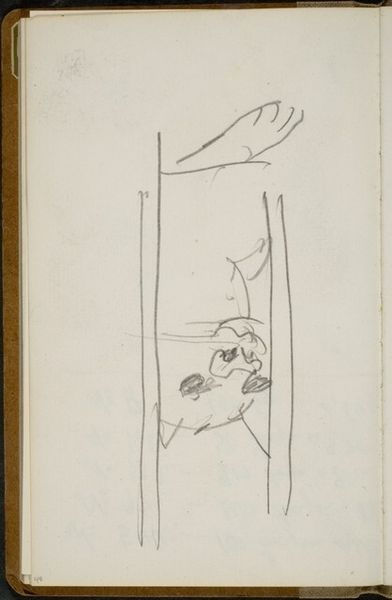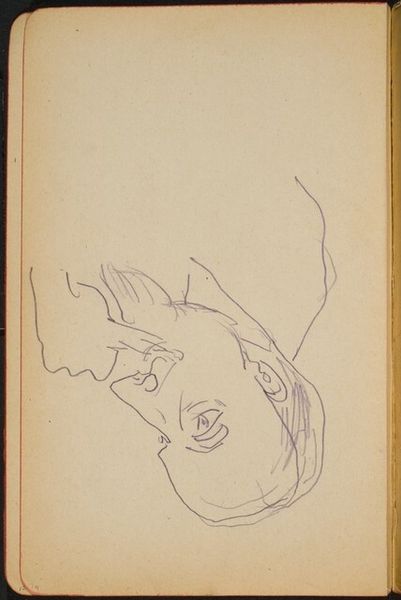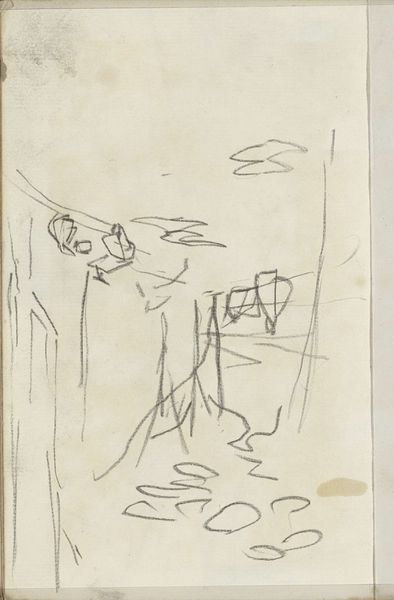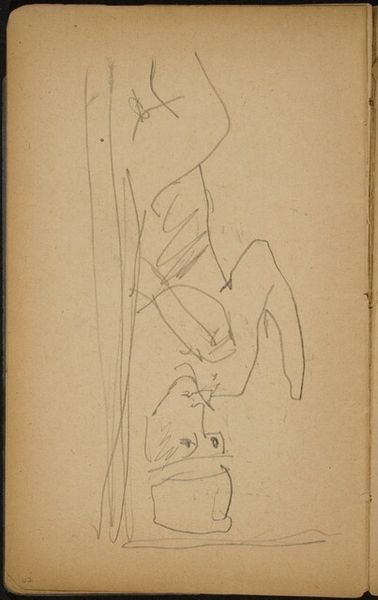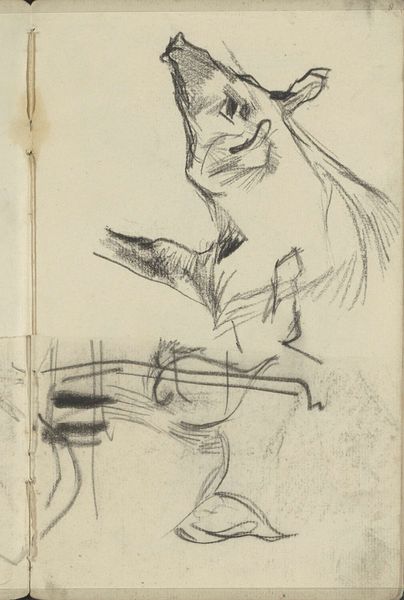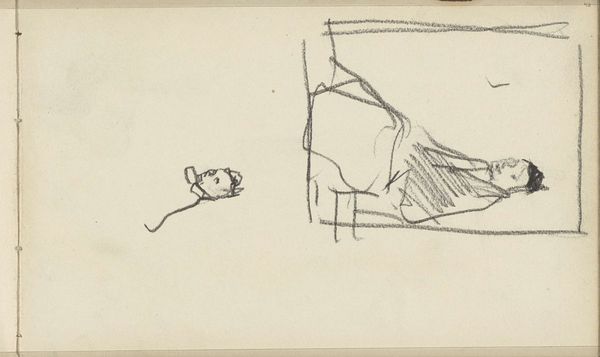![Parklandschaft (Cat Sleeping behind Bars)[p. 58] by Max Beckmann](/_next/image?url=https%3A%2F%2Fd2w8kbdekdi1gv.cloudfront.net%2FeyJidWNrZXQiOiAiYXJ0ZXJhLWltYWdlcy1idWNrZXQiLCAia2V5IjogImFydHdvcmtzLzJmYzQ2MGUxLWUxMDctNDRlYi05ODIyLWQ0NGZmNTM2MzQ4MC8yZmM0NjBlMS1lMTA3LTQ0ZWItOTgyMi1kNDRmZjUzNjM0ODBfZnVsbC5qcGciLCAiZWRpdHMiOiB7InJlc2l6ZSI6IHsid2lkdGgiOiAxOTIwLCAiaGVpZ2h0IjogMTkyMCwgImZpdCI6ICJpbnNpZGUifX19&w=1080&q=75)
drawing, paper, pencil
#
drawing
#
landscape
#
figuration
#
paper
#
pencil
Dimensions: overall: 16.7 x 10.3 cm (6 9/16 x 4 1/16 in.)
Copyright: National Gallery of Art: CC0 1.0
Curator: Here we have Max Beckmann's pencil drawing, titled "Parklandschaft (Cat Sleeping behind Bars) [p. 58]". It looks to be a page torn straight from a sketchbook. Editor: My first impression is…claustrophobia. Despite the title including "Parklandschaft", or park landscape, those horizontal lines create a palpable sense of confinement. A landscape observed through a cage, almost. Curator: Indeed. You know, looking closer, the immediacy of the pencil strokes gives me a glimpse into Beckmann's process. You can practically feel him sketching rapidly, capturing a fleeting moment. It's raw and unfiltered, wouldn't you say? A window into his working mind, if you will. Editor: Absolutely. Note the very particular nature of the paper; that visible tooth gives so much visual information about its material existence as an object of consumption – like, did Beckmann buy it himself? Was it mass-produced or individually laid? All the answers change our understanding of the work. And the very conscious application of line here does challenge our ideas about value within “high art”. Curator: I wonder what drew him to this particular scene? What's so interesting in a sleeping cat, that merits capture between landscapes? Was he perhaps drawing a parallel between domesticity and imprisonment? Or could it be a musing on the restriction of artists, like the caged domestic animal of his sketch? Editor: And let's not forget, Beckmann's work often dealt with the anxieties of the interwar period. The "bars" here could signify the restrictions imposed by society or even his own inner turmoil during a time of unprecedented industrial material growth. What constraints, after all, does society bring to artistic endeavors and freedoms? Curator: That's a rather bleak way of thinking about it. But I do see what you are driving at. He takes such a commonplace scene, but with such line control, and suggests deeper layers beneath a seemingly normal moment. So what appears straightforward, and perhaps mundane, in reality hints at an unease. Editor: It does add another layer of complexity to Beckmann’s wider body of work and how pencil, paper, and socioeconomics all blend! It's an interesting snapshot of his time and of how one uses the art of making do with such quotidian elements, no? Curator: Yes, absolutely. Looking again, what truly speaks to me is the simplicity in form alongside these complexities, born out of observation; the freedom felt through such raw creation is rather beautiful to behold. Editor: For me it is precisely about labor. Every work by Beckmann becomes a quiet manifesto. It is about what we produce with the society that produces us as both materials and subjects.
Comments
No comments
Be the first to comment and join the conversation on the ultimate creative platform.
